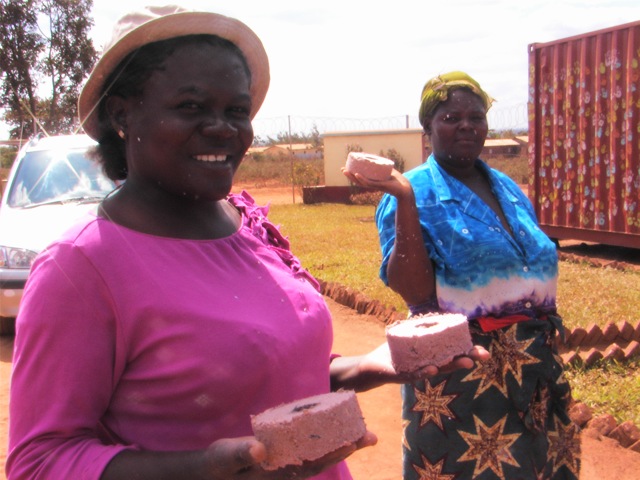Social impact investing as a burgeoning market can take investment dollars and generate a mutually beneficial outcome for all parties involved. My non-profit, Tricord Global experienced this first-hand. I’d like to introduce David Briggs, co-founder of Tricord and our guest blogger for today. This post was an update from one of our many Tricord Global projects abroad.
Building Businesses through Social Impact Investing
“I want to start a business milling corn and grain for the feeding project,” Lea said with a sense of excitement and trepidation in her voice. She continued, “I have ladies that are illiterate and can’t count money and they would never qualify for a micro-loan to start a business. However, I could pay them a little to grind or mill corn during the season and even grind their grain for a reduced price. What do you think?”
This impassioned plea from our Social Development Director is what started an incredible journey that ended up supporting 6-12 ladies with a salary; sustained an adult literacy program in one of the poorest communities in Lilongwe, Malawi; gave birth to a profitable soap business; established a firebrick business; and yes, even allowed some milling of corn and grain for the feeding of 800 children a day in an established feeding program! It also gave us a business model to replicate in at least two other countries and counting. On top of all that, the firebrick business was a featured article in a well-respected Agriculture magazine in the United Kingdom!
But I am getting ahead of myself. I would like to share with you how Tricord Global was able, with a little seed money and some business training, to turn an idea into a successful and sustainable reality.
From Vision to Reality
When Lea shared her desire, I asked her how much it would cost and what did she estimate the profits to be? She explained that she wasn’t sure but was willing to do what was necessary to find out. I told her if it could be shown that the project would be sustainable after the initial investment, we would be willing to provide the initial capital. I also asked that some type of community development program be paid for or subsidized out of the net profits of the business.
We worked with her to develop a business plan. During the cost analysis stage, she discovered that the overhead of running a mill would not produce the profits and cash flow to bring profitability. But after some research, Lea discovered she could turn trash into cash by recycling paper goods and agricultural byproducts. An updated cost analysis showed that she only required 1/4th the amount of start-up capital! We immediately started the business and brought it to a positive cash flow.
From the net profits of the firebrick business, we were able to finance an adult literacy program. Recently we were told one of the ladies who sold firebricks in the market attended the adult literacy program and was able to sign her name for the first time. Before too long she will be able to read, write and count money! This will qualify her for a micro-loan to start her own business.
Adapting to Problems
The “Trash for Cash” program began and was so successful that another problem was created. The firebricks could only be pressed and dried during favorable weather. When the rainy season came, production could not keep up with demand. Once again we shifted into problem-solving mode. There had to be a way to increase production so there would be enough product in stock to meet the demand during the rainy season. They proceeded to build make-shift drying facilities with racks so they could work during the wet weather.
After that, Tricord helped the group purchase a mill for the compost as well as the corn and grain. Now they were able to mill both compost for the firebricks and grind corn and grain. And it wasn’t long after that I sent an email to Lea with some information concerning the Jatropha seed and all of the products that could be made from the oil that is pressed out of the seeds. Lea quickly discovered that she could make soap from the oil and sell it in the market. The exciting thing about this prospect was the soap could easily be made year-round.
Lea applied what she had learned and formed a new business plan. So she ran a test market and found that the soap business did really well! There was a profit margin of about 40% and the soap prices were still very competitive with other soaps on the market.
From all this, we gained two business models that can work in several countries with similar demographics. Simply put, the business can be duplicated. Also, the start-up is minimal and the businesses are sustainable within the local economy.
A challenging thought
What an incredible difference we can make in the lives of the disadvantaged around the world when we freely and strategically give our knowledge and resources! It doesn’t take much to transform a life or a community if you do not hesitate to walk through a door of opportunity.
Social impact investing is a powerful form of investing that benefits both parties. It truly can change the world. In our office, we spend a lot of time focusing on how we can make our efforts more than just charitable. We focus on making them sustainable.



